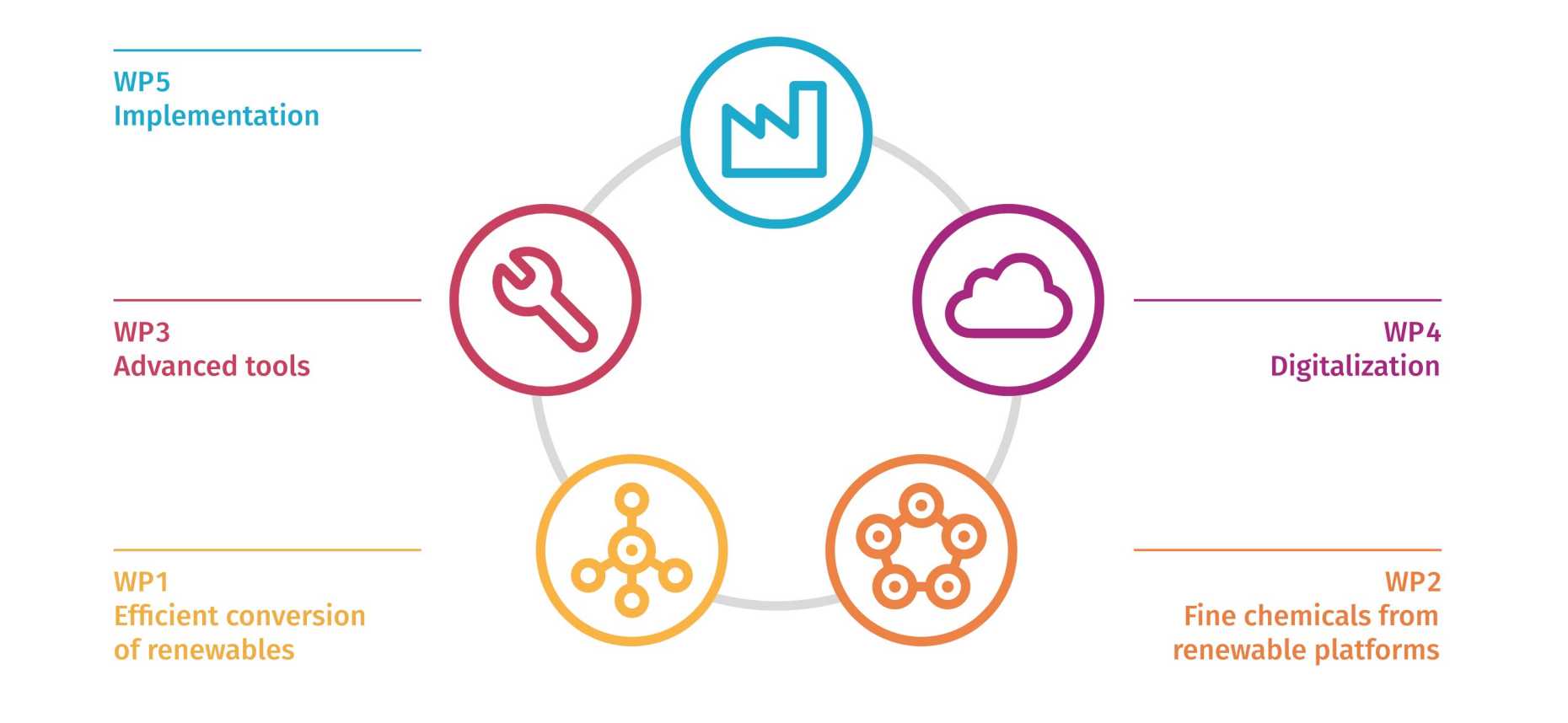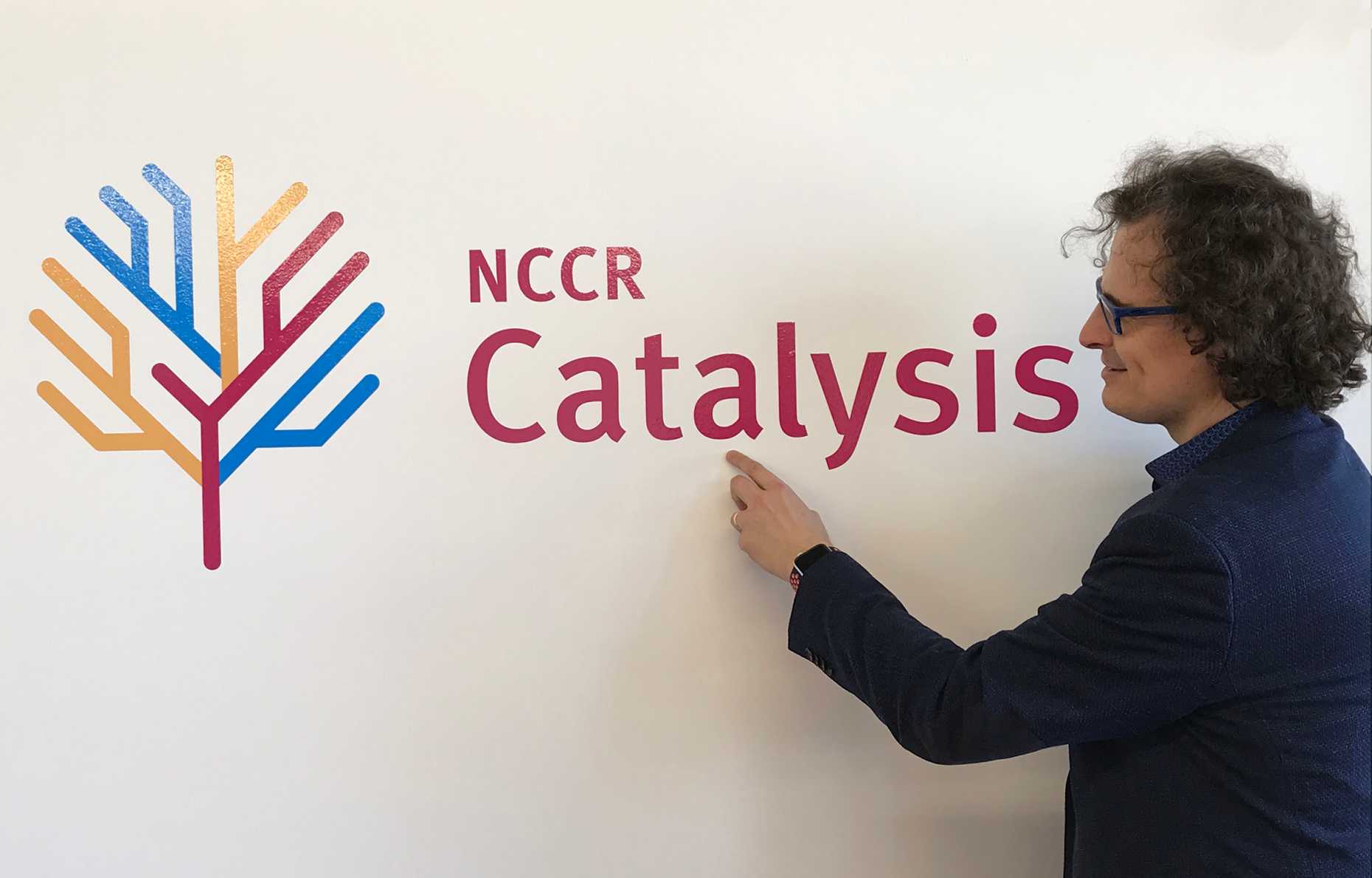The Swiss heart of sustainable chemistry
- D-CHAB
- LAC
- LPC
- ICB
- LOC
- Highlights
Fertilizers, medicines and fuels have one thing in common: they are usually produced using fossil feedstocks and corresponding catalysts (substances that drive chemical reactions). To achieve carbon neutrality, we need new technologies and catalysts for renewable feedstocks. As the first center of its kind in the world, the ETH Zurich-associated NCCR Catalysis aims to revolutionize the production of chemicals and materials by creating, via interdisciplinary collaboration, innovative solutions.
Sun, water, and air. In the future, these could be the only feedstocks needed to produce fuels and chemicals using efficient catalysts. For example, ammonia: a fertilizer for crops, could be produced right at the edge of the field, usable worldwide and sustainable from feedstock to product, as Javier Pérez-Ramírez – professor at the ICB – sketches with quick strokes on his white office wall. But the current situation looks different: "Today, ammonia is still manufactured from natural gas using the Haber-Bosch process in huge factories with enormous energy consumption." Pérez-Ramírez points to the reaction equation below the sketches. The product is the same in both cases, but the key to a carbon-neutral future is the sustainable path for its production. For this reason, Pérez-Ramírez initiated the National Center of Competence in Research (NCCR) Catalysis. Its mission is to develop new technologies for a sustainable chemical industry, which is no longer reliant on fossil resources and produces zero waste.
The "fossil" roots of petrochemistry
The concrete example of ammonia production illustrates a general problem. One can imagine the chemical industry as a tree: to date, crude oil and natural gas are the roots and trunk for many building blocks; their subsequent transformation in turn, creates the "treetop" – the huge variety of products that we use every day. "Fuels, for example," Pérez-Ramírez explains with a glance at the historic-looking gas pump in his office, "but also medicines, fertilizers, or building materials. The Swiss chemical industry produces over 300,000 chemical products, about 95% of which rely on fossil feedstocks." As he points out, the production of the chemicals needed for these products also often generates more waste than product volume. Additionally, there is still a lack of efficient routes for recycling the products. "At the same time, the population is growing and constantly requires more consumer goods and energy. All in all, this has a negative impact on the environment, for example as we have seen with climate change."
Holistic solutions to a complex problem
In order to "green" the whole chemical manufacturing process from the starting material to the end product, a new generation of catalysts – substances that can accelerate the necessary chemical transformations – is needed as well as renewable feedstocks and energy. But that's easier said than done: "For fossil feedstocks, the production chain including catalysts is already well established and profitable," Pérez-Ramírez explains. Thus, a change will only be accepted by industry if an alternative works equally well. Renewable feedstocks such as CO2, H2O and N2, however, are chemically extremely inert, which means they are difficult to convert into other products. "Finding efficient catalysts that can act as "engines" to drive the reactions in such a way that the production process remains possible and economically viable on an industrial scale is difficult. Moreover, the processes must only use renewable energy."

Many researchers have already tried to find solutions in the past, but most were unsuccessful. "The problem is too complex for individual research groups," Pérez-Ramírez says. In order to replace petrochemistry with a sustainable alternative in the long term, various disciplines have to work together– this is the concept of NCCR Catalysis.
NCCR Catalysis - Sustainability via network
"However, bringing the disciplines together was not trivial," Pérez-Ramírez recalls. In 2016, he and two colleagues, Prof. Christophe Copéret from ETH Zurich and Prof. Cristina Nevado from the University of Zurich, discussed the idea for the first time. They realized that there is a lack of unity and exchange among chemists and universities in Switzerland to tackle the big problems of the future. "It was clear that we needed an integrative approach," Pérez-Ramírez says. "ETH Zurich and EPFL as well as other universities and research institutes nationwide needed to align activities more closely." This effort is also evident, e.g., in the leadership of NCCR Catalysis: with Prof. Jérôme Waser (EPFL) as co-director – along with Pérez-Ramírez as director – the project unites both of Switzerland's federal institutes.
Currently, the center, with the project office based at the Department of Chemistry and Applied Biosciences on the Hönggerberg, includes 29 core members and around 140 researchers from both federal schools, 3 cantonal universities, 2 universities of applied science, and 1 private institution. The number will increase to over 200 members in the near future. NCCR Catalysis integrates nearly all branches of chemistry (organic, inorganic, physical, bio, and theoretical), chemical and process engineering, materials science, and computer science. They contribute to one or more of external page 5 focal areas of the center.

Particularly challenging will be the points of digitalization and implementation. "Every community collects, organizes, and reports data differently. This means that we are not using data to its full potential. Therefore, certain standard formats need to be defined to facilitate the exchange and use of data. This poses a huge challenge," Pérez-Ramírez acknowledges, "but is necessary to modernize research approaches." After all, the results of NCCR Catalysis should also be implementable in industry: "Catalysis was born in industry, without application it has no future."
More than a research center
In addition, the center wants to set new standards beyond research and application. "Best-in-class education and training lies at the heart of NCCR Catalysis, and we aim to equip young researchers with adequate tools to confront challenges facing society", Program Advisor Sharon Mitchell says. "We are excited to bring together people from a broad variety of personal, educational and professional backgrounds, and to leverage the great potential that lies in their diversity", Program Coordinator Marie Francine Lagadec adds. "NCCR Catalysis wants to establish an open dialogue between academia, industry and society, and aims to translate academic discoveries into competitive technologies with tangible benefits for society through collaborative ecosystems of chemical research and industry."

The center is being financed mainly with support from the Swiss National Science Foundation (SNSF) together with strong contributions from the home institutions: "The development of new catalysts is of crucial importance for sustainable economic development in the future. The Department of Chemistry and Applied Biosciences is proud to have been given the opportunity to lead these cross-university efforts through several of its members," Karl-Heinz Altmann, Head of the Department, says. Additionally, industry has already expressed vast interest in the initiative.
"We are currently setting up structures to ensure smooth operation over the next decade, and, in parallel, developing initial roadmaps for the areas mentioned above. As director of the center, it will also be my task to disseminate what NCCR Catalysis is, and to raise awareness among the general public of why sustainable chemistry is an urgent need and not a luxury," Javier Pérez-Ramírez emphasizes. "In the future, NCCR Catalysis should be the heart of sustainable chemistry in Switzerland and make its solutions available internationally." Then, concepts such as the sustainably fertilized field could one day turn from a quickly drawn sketch into a new green reality.
Further Information
